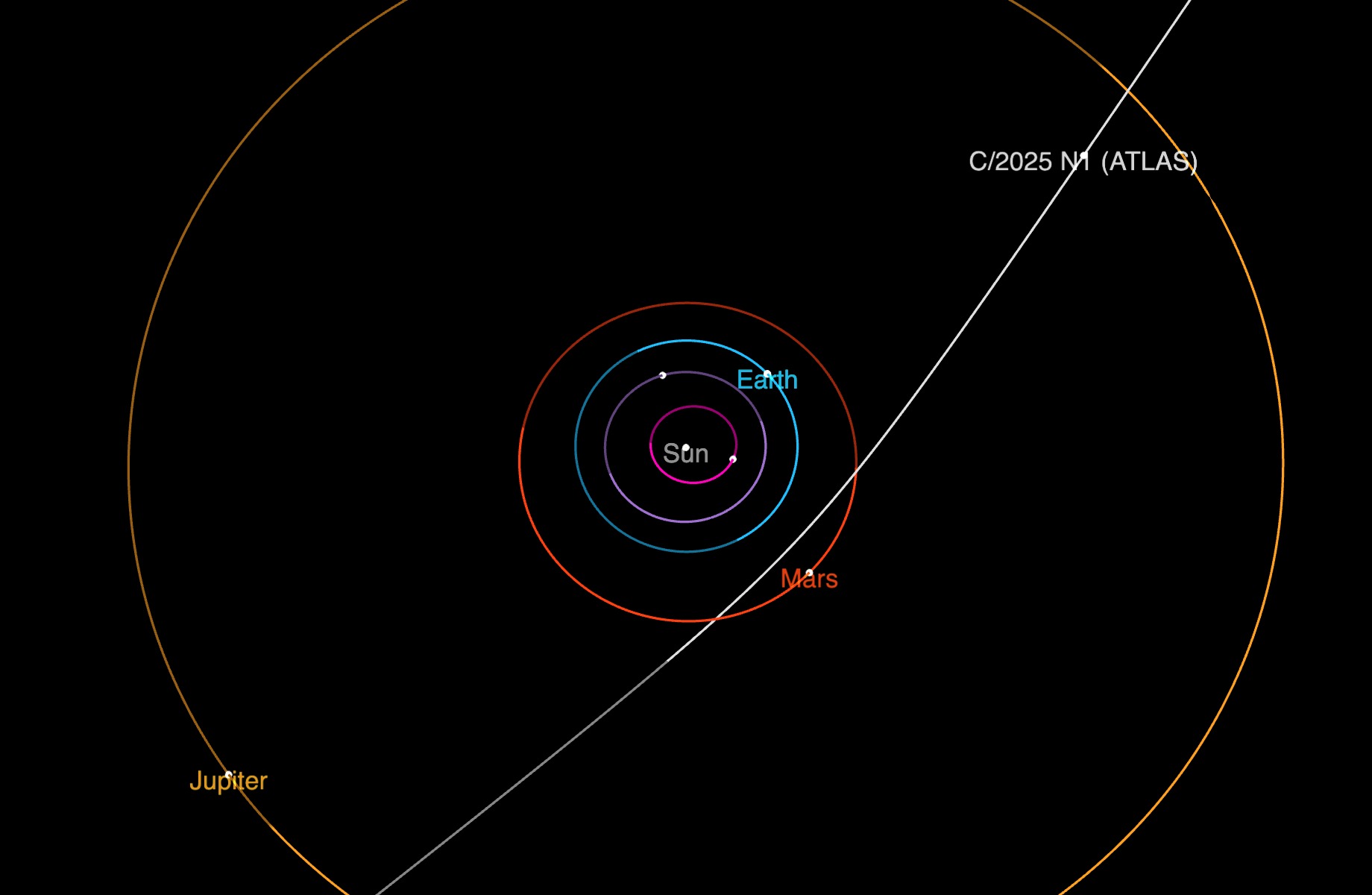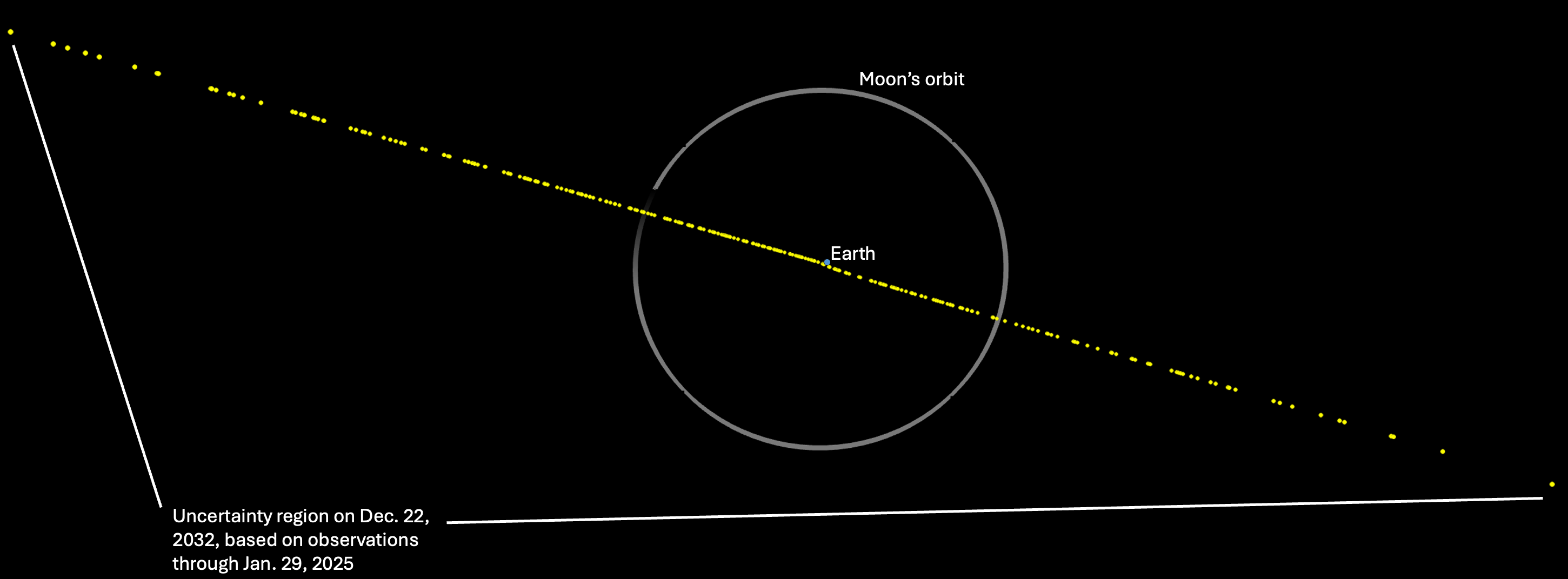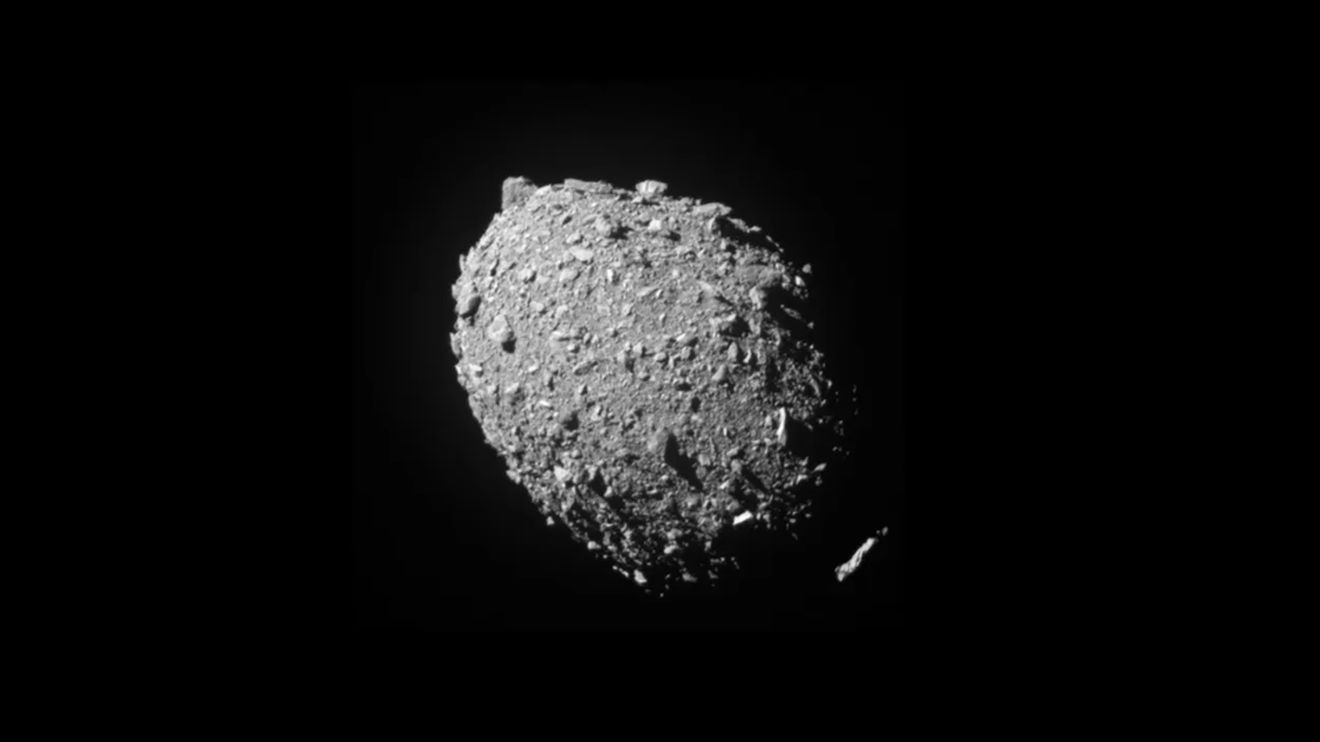CNEOS
-
NASA Discovers Interstellar Comet Moving Through Solar System

On July 1, the NASA-funded ATLAS (Asteroid Terrestrial-impact Last Alert System) survey telescope in Rio Hurtado, Chile, first reported observations of a comet that originated from interstellar space.
-
Latest Calculations Conclude Asteroid 2024 YR4 Now Poses No Significant Threat to Earth in 2032 and Beyond

NASA has significantly lowered the risk of near-Earth asteroid 2024 YR4 as an impact threat to Earth for the foreseeable future.
-
Asteroid 2024 YR4 reaches level 3 on the Torino Scale

NASA analysis of a near-Earth asteroid, designated 2024 YR4, indicates it has a small chance of impacting Earth on Dec. 22, 2032.
-
NASA Study: Asteroid’s Orbit, Shape Changed After DART Impact

After NASA’s historic Double Asteroid Redirection Test, a JPL-led study has shown that the shape of asteroid Dimorphos has changed and its orbit has shrunk.
-
NASA System Predicts Impact of a Very Small Asteroid Over Germany

The Scout impact assessment system calculated where and when the asteroid 2024 BX1 would impact Earth’s atmosphere, providing a useful demonstration of planetary defense capability.
